Rome, Metro A turns into art gallery to raise awareness. Does it succeed?
Starting May 7, 2024, for five months, passengers on Rome’s Metro A will find themselves inside a traveling art gallery. Mind The Earth is an innovative initiative, promoted by the nonprofit Yourban 2030 and inspired by the goals of Agenda 2030, which aims to raise awareness of environmental sustainability issues through contemporary art.
A multisensory journey inside the orange metro composed of images, sounds and words by IRAE artists. Curated by Angelo Cricchi and Valeria Ribaldi, the subway cars change shape, transforming into a surreal reality populated by a multitude of works: Nicola Bertellotti’s abandoned landscapes, Giacomo Costa’s post-atomic ones, Michele Guido’s botanical macro-worlds, Matteo Basilè’s minke whales in quarries , Angelo Cricchi’s poor creatures, Wu Yung Sen’s animals of the abysses, Agostino Iacurci’s fabulous plants, and Shinya Masuda’s gastronomic tarot cards. But that’s not all: alongside the visual works, you can glimpse a QR code that allows you to listen to Marco Del Bene’s album Abissirae , which succeeds in giving voice to the abyss.
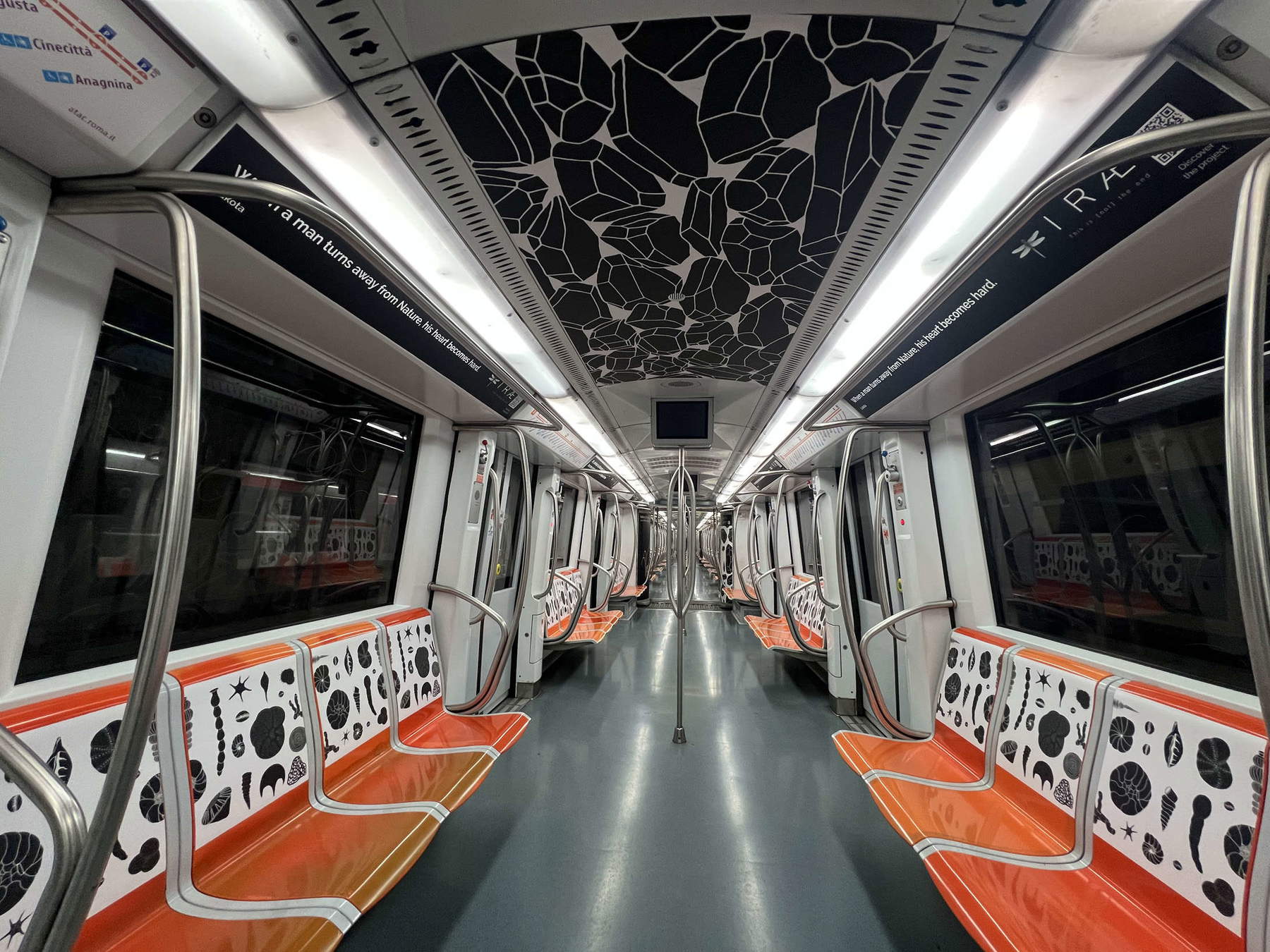
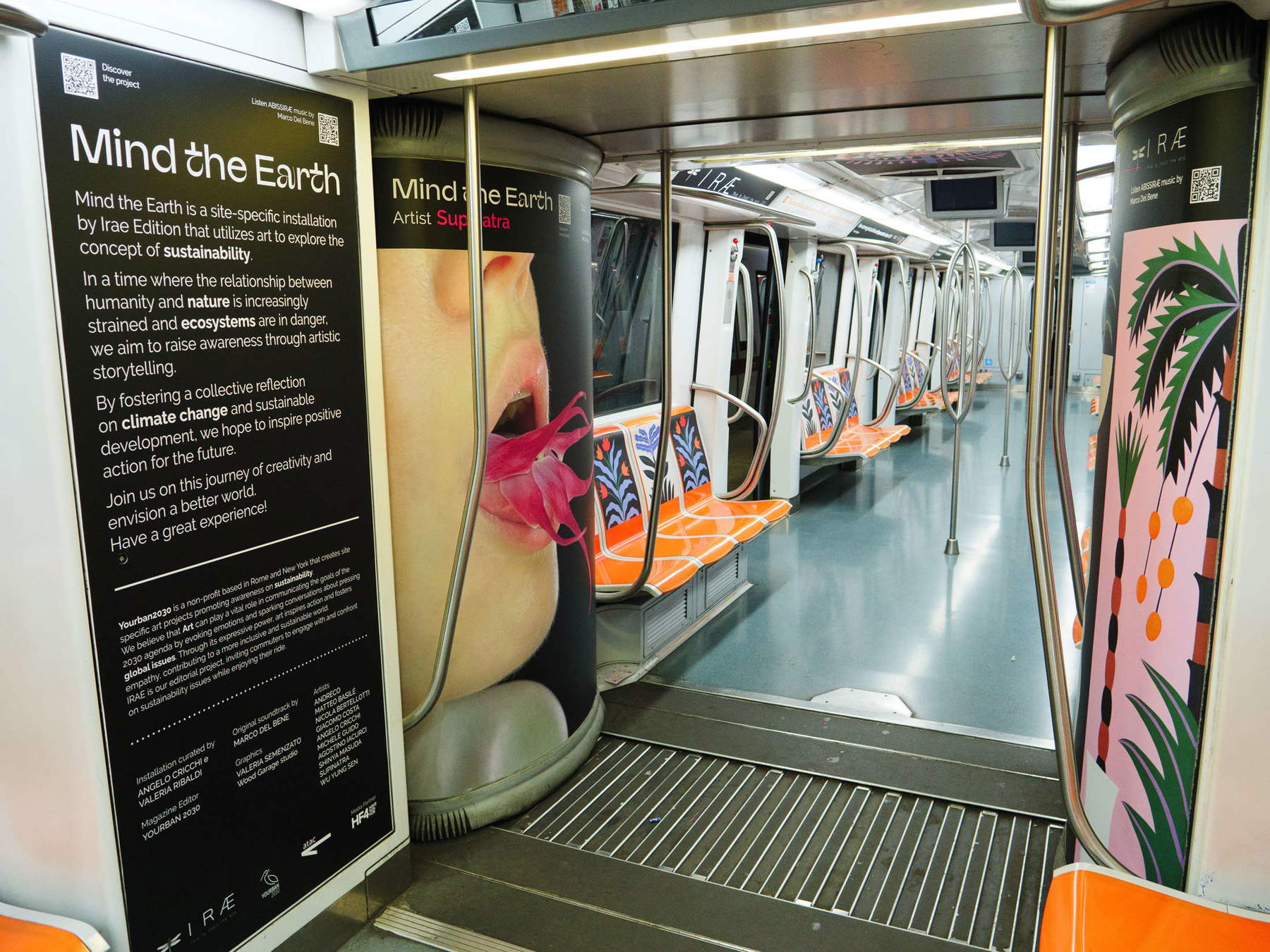
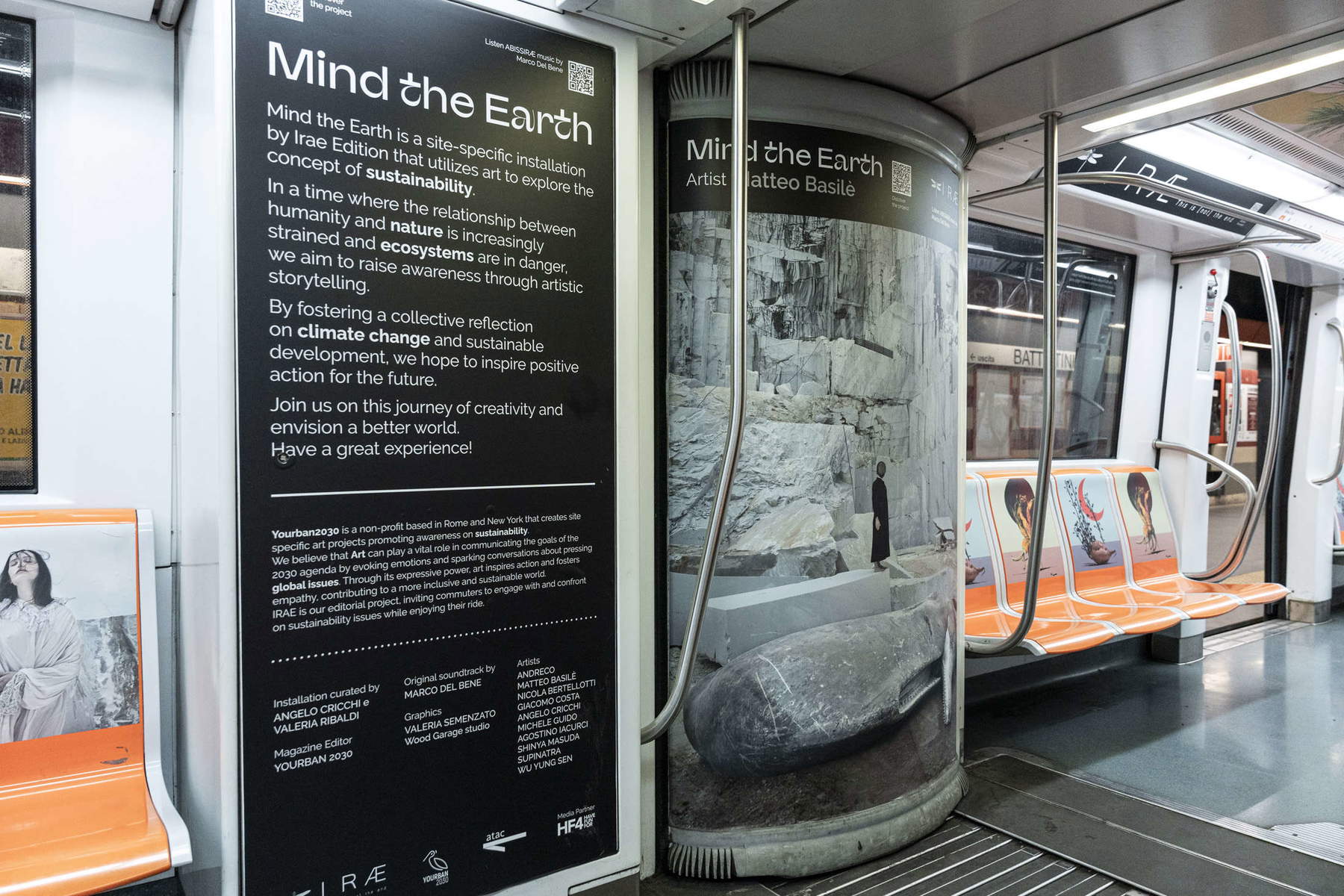
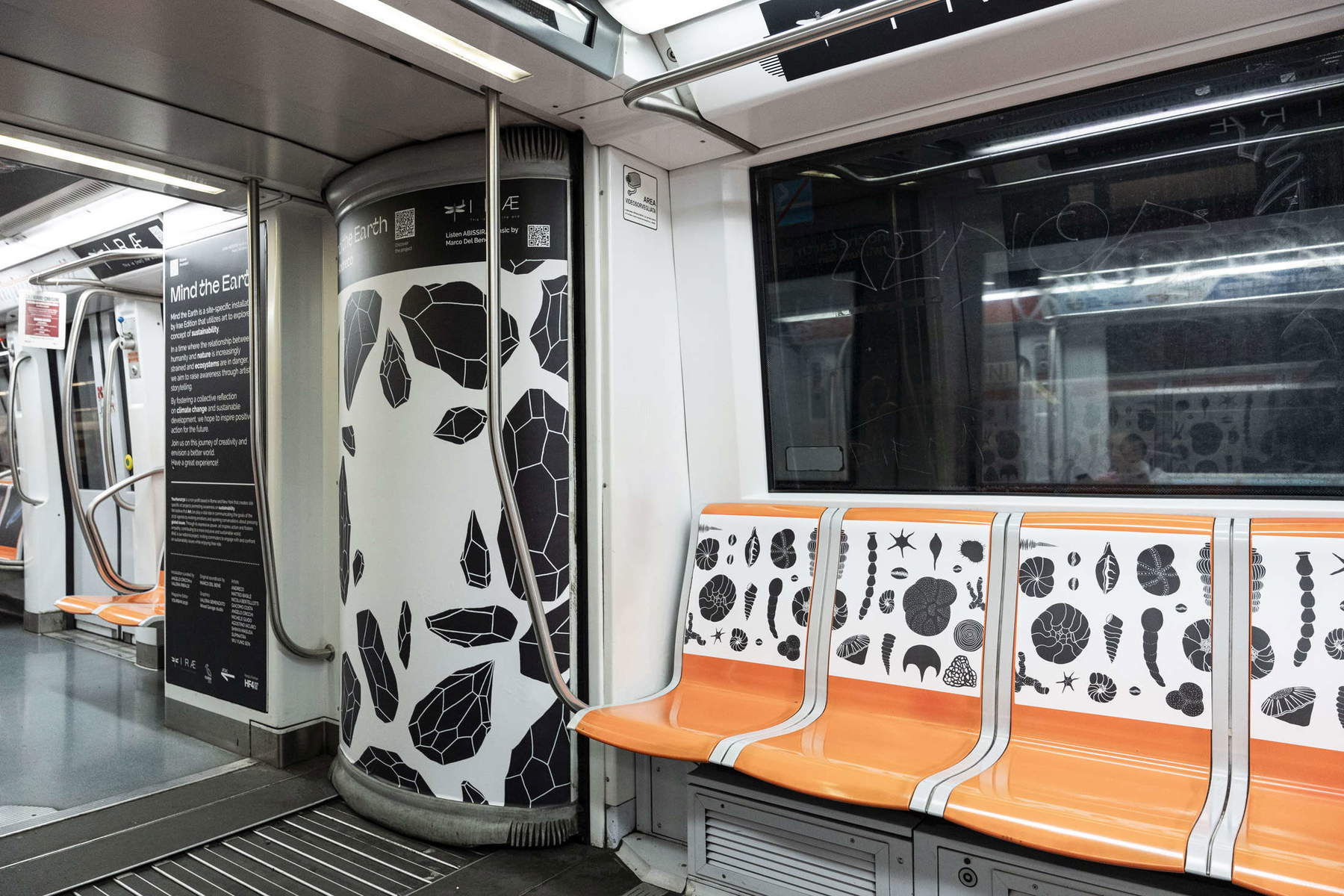
The intent of the Mind The Earth project, which echoes the pun that comes from the London subway warning “mind the gap,” seems to be to make itself the spokesperson for a story and to invite reflection about the current state of Planet Earth and our role within the global ecosystem. A socially-oriented operation that uses forms of social living as a way to bring art closer to everyday life, a widespread exhibition with a noble intent that, however, does not entirely convince. In terms of usability and opportunity, the project sets itself up as an excellent opportunity for interaction between the public and art, a relationship not always sought after for most non-“insiders,” while also succeeding in its intent to return to the general public a critical storytelling about the state of our planet through numerous artistic contributions, which, soaring in a public space, cannot help but provoke a strong reaction. Works that undoubtedly stimulate one to look up beyond the horizon of the ordinary, that urge one to go beyond a single vision but that, nevertheless, seem to fail fully in their intent to raise awareness of environmental issues. Why?
In recent years, art in the public context has expanded its significance, becoming a sign capable of contributing to urban regeneration and the creation of "relational space." Artists have begun to consider the social and urban context as an integral part of their projects, turning it into a new space for action to engage the public in a more direct and incisive way. The audience, however, is no longer selected, it has become the new patron, and this has inevitably influenced artists’ approach to new horizons. ’Art making’ has taken on meaning only when conceived and associated with the place of fruition, a lively place animated by social life that necessarily induces the search for new modes of communication, as well as languages.
Therefore, if art becomes a moment of reflection, can it send signals to recompose what at the social level has become fragmented? Can artistic interventions, inserted in difficult and fragmented social and urban contexts, together with the inhabitants, outline common perspectives capable of introducing changes in urban and human processes, or do they remain only good practices without concrete implications also due to the risks of superficiality connected to the brevity of the exchange established with the inhabitants? In an increasingly alienated society such as ours, with constant media bombardment, transforming the language of the artist into an ethical message, with a collective breath, capable of conveying the idea that we are all involved in and responsible for our future and that of future generations, is no small gesture. However, we are increasingly witnessing a proliferation of experiences that, while labeled as art, are actually expressions of a ’temporary activism’ with often improvised skills that, in most cases, produce results devoid of concrete meaning.
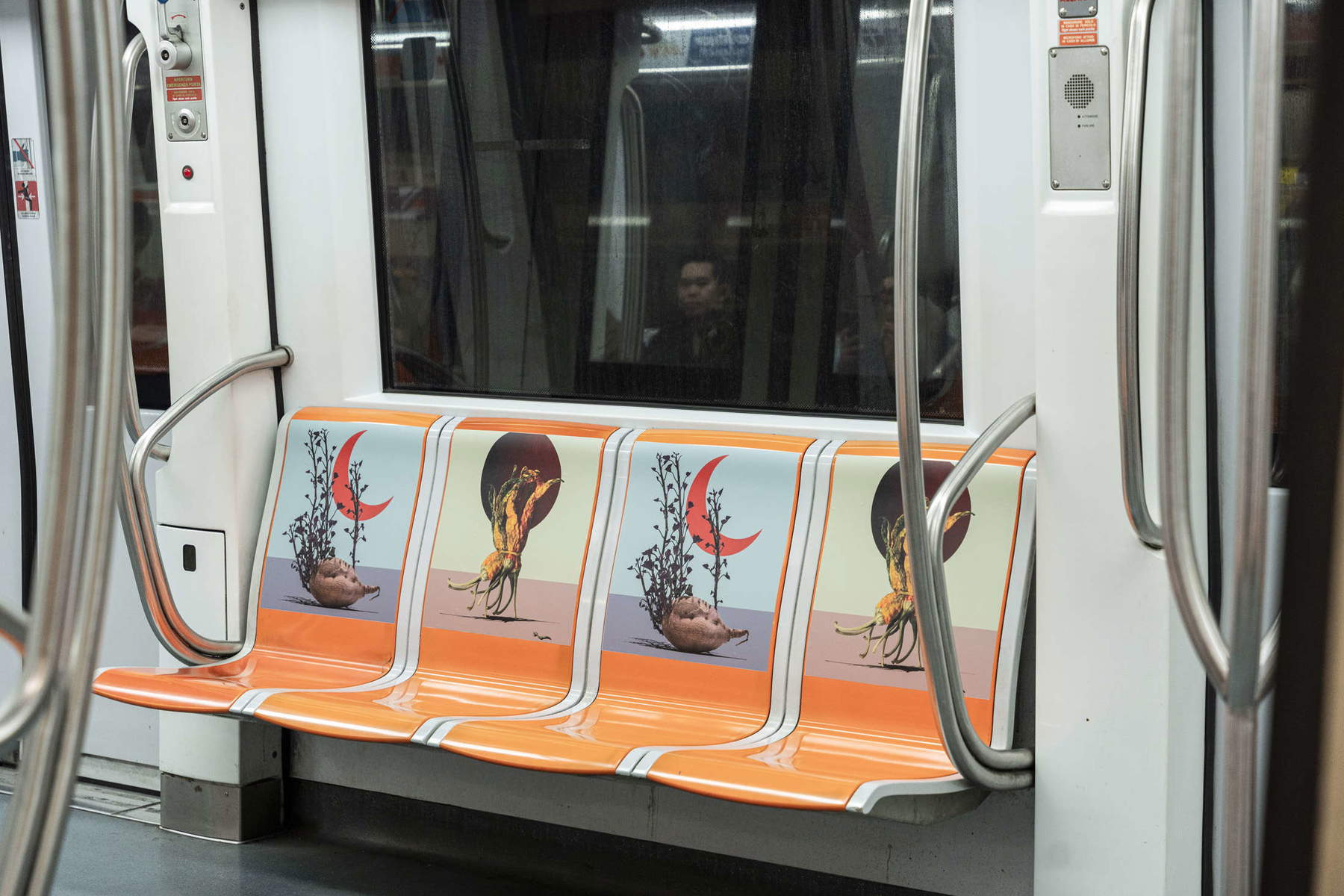

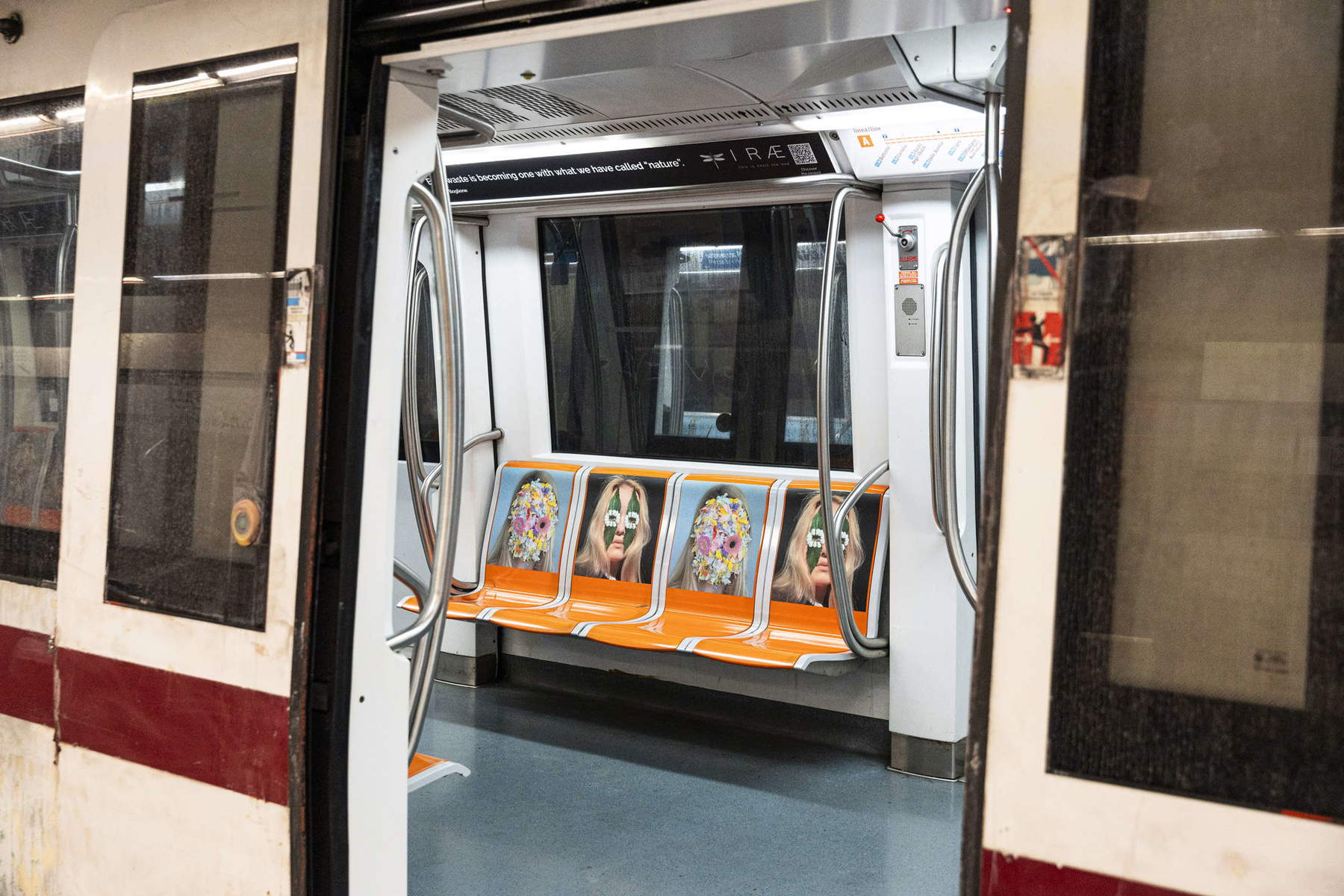
New art practices related to urban reality often reflect the ambivalence of contemporary art, which today finds itself in a paradoxical condition: on the one hand it is closed within the art system, on the other hand it is open to the real world. Art casts its shadow over reality, risking reducing the subjects it deals with to mere spectacle or pure aestheticization; at the same time, reality risks encompassing and suffocating artistic practice.
Until we can overcome this self-referential tendency, the risk of reducing cultural and artistic experience to a mere attractive space will always remain very high. And one question will continue to remain unanswered: what does it really mean today to intertwine art and urban spaces?
Warning: the translation into English of the original Italian article was created using automatic tools. We undertake to review all articles, but we do not guarantee the total absence of inaccuracies in the translation due to the program. You can find the original by clicking on the ITA button. If you find any mistake,please contact us.





























